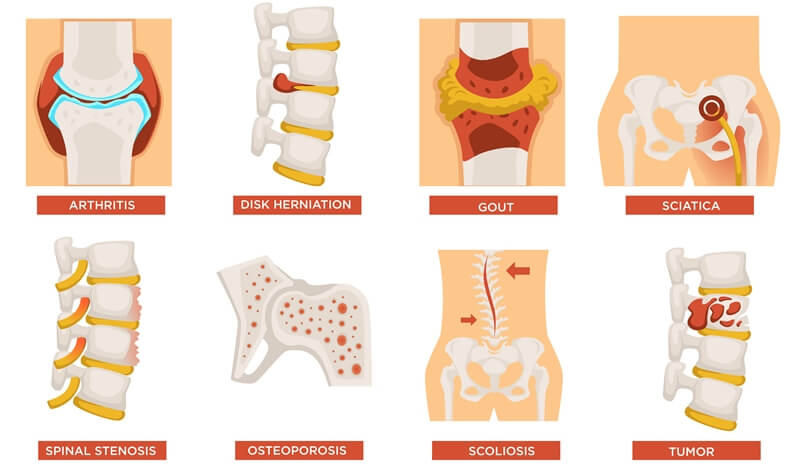
SPINAL STENOSIS
The structure of the discs between the vertebrae deteriorates over time. The hardened and shortened discs move towards the spinal canal. This leads to calcification and narrowing of the spinal canal. As a result, thickening of the joints, bones and ligaments in the spine leads to compression of the nerves. When this narrowing of the canal occurs in the lumbar spinal canal, it is defined as lumbar canal stenosis. Early diagnosis and treatment is very important in narrow canal disease.
LORDOSIS
Lordosis is a condition in which there is an excessive curvature of the spine in the lower back. The spine is naturally curved in the neck, back and lower back to support the weight of the head and absorb shock impulses. Lordosis occurs when the natural curve in the lumbar region is above normal. This causes excessive pressure on the spine and leads to pain.
Scoliosis can also cause shifts in the hips, ribcage, and shoulder blades, leading to postural and visual abnormalities. In children during their growth phase, this condition can cause abnormal loading on developing and growing spine and resulting to the deformities in the vertebrae.
People with lordosis usually have a visible curve in the lower back. When viewed from the side, the waist makes a certain C-shape. People with lordosis also appear to protrude their stomach and hips outwards.
The easiest way to control lordosis is to lie on your back on a hard surface. You should be able to slide your hand firmly under your waist. If you have lordosis, there will be extra space between your hand and your waist.
HERNIATED DISC AND CERVICAL DISCAL HERNIA
The protrusion of any organ or structure of the body beyond the anatomical boundaries that should be normal is called a hernia. Lumbar and cervical herniated discs occur due to factors such as age-related or other reasons, faulty movements, genetic predisposition and posture disorders. In addition to back and neck pain, hernia can cause pain from the neck to the arm or from the waist to the leg with nerve compression.
What is the Cervical Disc Herniation?
It is a condition caused by the compression on nerves extending to the arm area and spinal cord due to displacement of the cartilage between the neck vertebrae towards the spinal canal.
What is the Herniated Disc?
It is a condition that occurs when the cartilage located between the vertebrae slips out of place and extends into the spinal canal due to excessive force, putting pressure on the nerves and spinal cord that extend to the legs.

